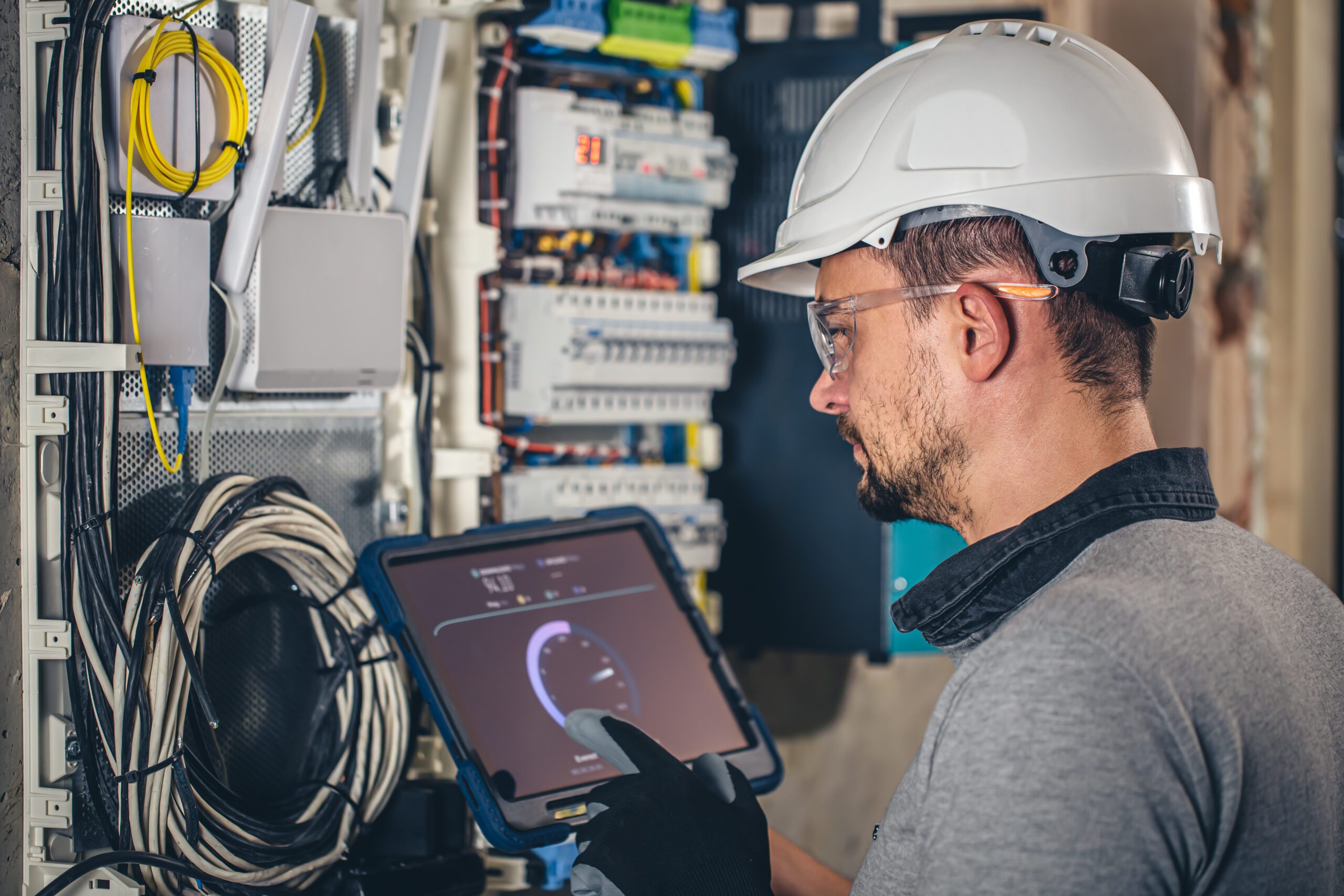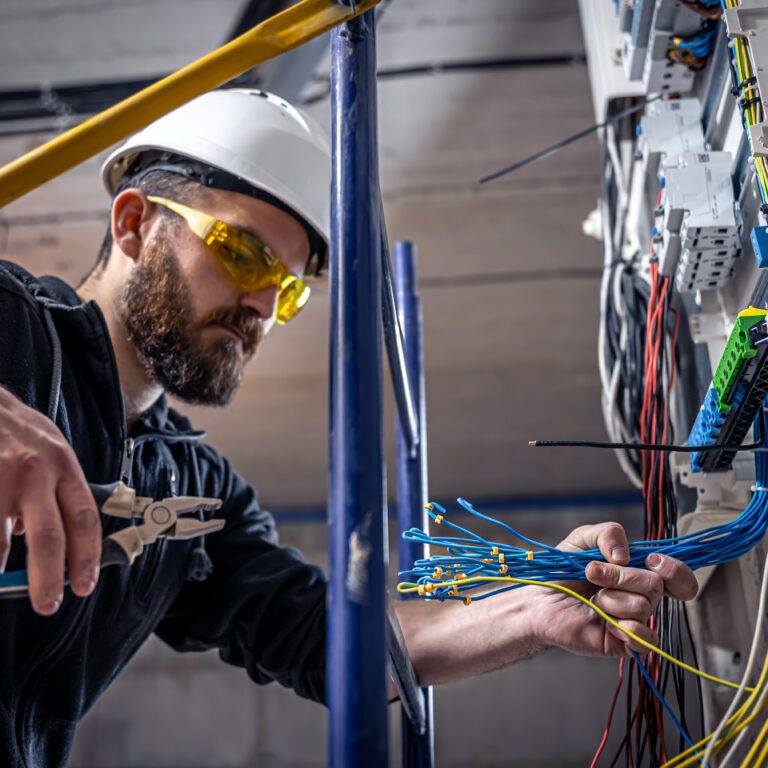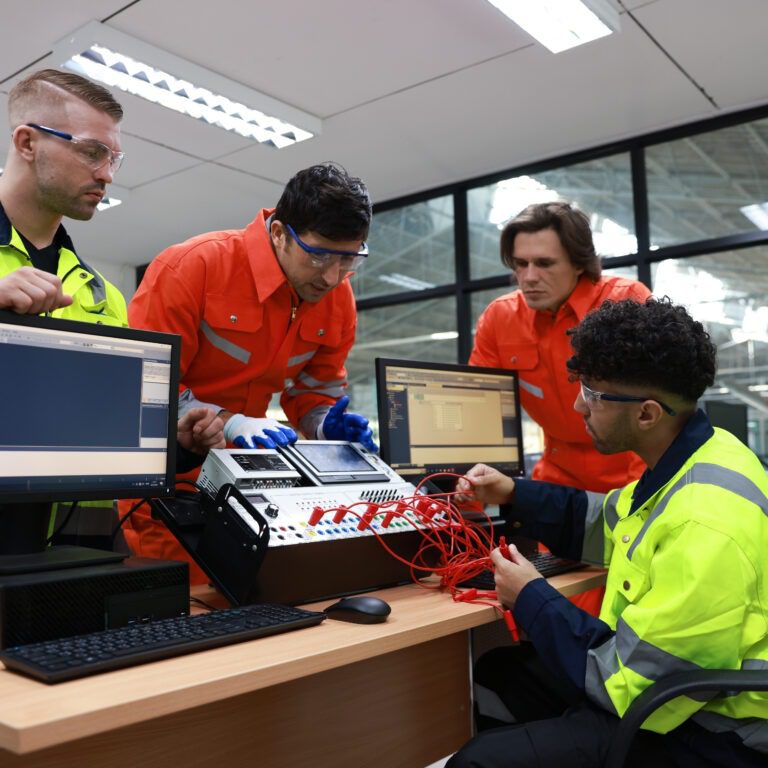Overview
The importance and priority of power quality in facilities are increasing every day, and awareness levels are rising. As a result, measures are being taken to prevent the premature aging of electrical components such as transformers, cables, switches, drives, motors, and more. This, in turn, helps prevent sudden breakdowns and production losses while also saving on heat-generated losses.
At Maiser Group, we provide the necessary technical analyses, infrastructure work, project calculations, and solution recommendations to inform our stakeholders. We aim to optimize the use of electrical energy from the grid connection point to the consumption points within facilities, minimizing errors and ensuring efficient usage.
• Harmonic, EMC and Reactive Power
• Resonance and Transient
• Measurement and Analyzing
• Sales and Service of Customized Products
- Energizing the future of power quality
- Where excellence meets electrical efficiency
- Empowering your electrical efficiency
Power Quality Solutions
Reactive Power: Reactive power, denoted as ‘Q,’ is energy returned to the grid. It’s drawn in circuits with inductive/capacitive characteristics to excite the magnetic circuit, then sent back in the next cycle. Reactive power constantly exchanges between the source and load, increasing current in the conductors.
The formula for reactive power is Q=UIsin(phi) (unit: VAr). Knowing current, voltage drop, and the phase angle (phi) is essential to calculate it.
Reactive power, inactive and unusable if current and voltage are out of phase, impacts power quality and causes voltage oscillations.
Grid regulations limit reactive power usage to 20% inductively and 15% capacitively based on active power consumption, penalizing violations.”
Please note that I’ve condensed the text for brevity, and some technical details have been omitted.
Harmonics: Harmonics, due to their existence, lead to capacity losses, heat losses, degradation or malfunctions, and disruptive events like communication errors in operations. In this context, it is recommended to request the harmonics levels that equipment can tolerate from relevant manufacturers and ensure that these values are met, or, in the case of complex facilities where these values cannot be achieved, adhere to grid standards.
In terms of the frequency dimension that underlies alternative energy, it is crucial. Harmonics are high-frequency current or voltage components formed as multiples of the fundamental frequency due to the influence of power electronics equipment that alters the magnitude of the grid frequency. Harmonics, because of their presence, cause capacity losses, heat losses, degradation or malfunctions, and disruptive events like communication errors in operations. In this sense, it is advisable to request the manufacturers to provide the relevant values for the harmonics levels that equipment can tolerate, or, if complex facilities are installed at a level where these values cannot be achieved, to rely on grid standards.
Resonance: Resonance, in physics, is the tendency of a system (usually a linear system) to oscillate at greater amplitudes at certain frequencies compared to others. This condition is referred to as the resonance frequency or frequencies of that system. At these frequencies, even small periodic forces can generate very large amplitudes. Electrical resonance, with a straightforward theoretical definition, is the state in a circuit with circuit elements like a capacitor (C) and an inductor (L), where maximum energy transfer can occur. In practice, due to the fundamental inductance nature of the transformers that supply power to our equipment, the presence of capacitance in the grid can be defined. In other words, if there is capacitance in operation, there is definitely a resonance point in that facility.
Transient: It is a short-lived energy burst caused by a temporary event or sudden change in system conditions.
The word “transient” is derived from the English word “transit” and, as a word, carries meanings like temporary or short-term. In the context of electricity, transient refers to temporary but very rapid changes in voltage. In transient conditions, it is possible for the instantaneous amplitude to reach multiples of the micro or pico-second order in the millisecond-level sinusoidal waveform. These situations can lead to equipment aging or malfunction depending on the amplitude’s magnitude.
Detecting transient events with devices that perform RMS measurements is almost impossible. Special measuring instruments that are much faster and capable of capturing sinusoidal waveforms are required. At this point, we use devices capable of detecting transient values that reach multiples of the nominal waveform. In AC systems, we can measure transients directly connected at voltages up to 5kV, and in MV and LV grids, we can measure transient waveforms that can go up to 500 times depending on the case with indirect connections.
Measurement: In our fault-based analyses, we increasingly encounter supraharmonics (high-frequency network disturbances) as the cause of issues or failures within the system. Unfortunately, only a few – actually, genuine – power quality analyzers offer the opportunity to measure these disturbances. Although grid standards (such as EN 61000-4-30 Class A or other standards) do not specify limits or recommendations for high-frequency pollution above 2.5 kHz, supraharmonics are now being encountered at many points in the industry, and this high-frequency pollution is causing malfunctions and disruptions. Measuring these frequencies is crucial for power quality analysis. However, our customers need not worry about this. We have been aware of this issue for a long time and use the necessary measurement technology that is the best fit for each situation.
Network Pollution: Due to the rapidly expanding application areas of advanced power electronics systems, electrical systems are experiencing increasing levels of pollution, leading to a decline in power quality. It is certain that different levels and frequencies of contaminated energy will disrupt and shorten the lifespan of certain devices or machinery. Network pollution is a situation where the pollution generated by all factories fed from the same source is reflected equally on everyone. In this case, factories that generate less or no pollution are at a disadvantage compared to those that generate more pollution. Furthermore, network pollution in some regions is triggered, especially due to incorrect designs or products, and almost reaches the limit level in medium voltage. In such cases, businesses can find themselves in violation of limits before they even start operating. Special times and points may need to be determined for network pollution measurements. Additionally, these measurements should be conducted with long-term and preferably stationary power quality analyzers.
Communication Errors: The use of proper grounding methods, simple devices, and techniques such as shielding, transposed cables, differential filters, and suppressors can, in most cases, control noise.
In the industry, where high production capability and capacity are essential, communication networks play a critical role in increasing control, automation, and inter-machine synchronization rates. The key to producing fast, secure, and standard products is for machines to operate in planned harmony. However, it is known that communication errors can occur due to design errors in both the project and the assembly, as well as unforeseen designs of all components in the project.
Furthermore, in facilities with changing grid conditions, where maintenance and measurements have not been conducted for a long time, and in cases of unexpected load changes, communication errors are more frequently observed because the issue cannot be detected early. Usually, this topic can be resolved with fundamental diagnoses and interventions, and the most critical point is the ability to identify the source of the problem, which requires high expertise and capability.











